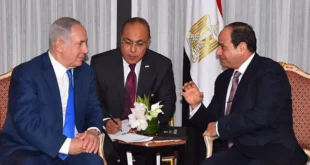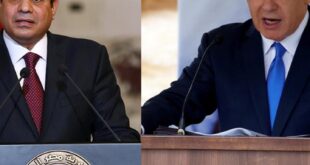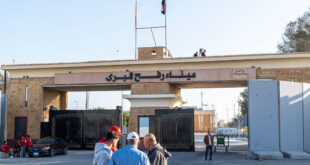The constitution of the Federal Democratic Republic of Ethiopia, promulgated in 1995, was supposed to resolve ethnic conflict and enhance self- and shared-rule. But, contrary to expectations, Ethiopia became heavily embroiled in inter-ethnic skirmishes starting in 2018.
Demand for self-rule and ethnic fighting has been brewing in a number of Ethiopia’s regional states.
More than 3 million none-native ethnic groups that lived and intermarried with Amhara, BeniShangul-Gumuz, Oromo, Somali, South Nations, Nationalities, and People Regional (SNNPR) were forced out of their homelands or permanent residences and migrated to other regions and neighboring countries to avoid human rights violations and the effects of human-made disasters (Desta, 2020).
To add fuel to fire, the Ethiopian government, headed by Abiy, has recently teamed up with local regional militias, the Amhara region’s special forces, the genocidal fano youth squad, hideous human rights violator Isaias Afework and his army (which cornered the Eritrean people, causing them to suffer in perpetuity behind closed doors in Hagos from November 2020 to June 2021), Somalia’s troops, and the United Arab Emirates drones. Collectively, they have sieged, starved, and abused the Tigrayan civilians.
As stated by Finland’s Foreign Minister, Pekka Haavis, it has been Abiy’s governmental policy to wipe out the Tigrayans within 100 years. On July 18, 2021, Abiy “…referred to Ethiopia’s Tigrayans as the cancer of Ethiopia and called on all Ethiopians to remove the invasive weed”. (Rubin, July 19, 2021)
With this grandiose plan in mind, Abiy’s allied forces killed many young and old women, raped underage girls, butchered animals, burned farmland, and deprived citizens access to food, water, electricity, telephone, and internet. In addition to the killing of religious leaders, Abiy’s allied forces also liquidated a number of historically known monasteries and mosques, and looted valuable items from hospitals, restaurants, and educational institutions.
In addition to killing and chasing the Tigrayans from their homelands and livelihood, the invading Amhara militias deliberately expropriated them from their productive assets and commercial activities in the western and southern regions of Tigray (Desta, 2020). Also, refugees in many Eritrean refugee camps, under the protection of UNHCR in Tigray, were attacked, abused, and killed by Isaias armed forces. Moreover, what was disturbing for many UNHCR workers was that some of the Eritrean refugees were forcibly returned to Eritrea from where they had fled (Plaut, November 2020 to June 2021.)
Realizing the gravity of the situation and the inhuman conditions that the Tigrayans were undergoing under Abiy, one of the world’s true “war mongers,”, the United States’ Ambassador to the United Nations, the Honorable Linda Thomas-Greenfield, asked the Secretary General of the United Nations, Antonio Guterres, that the horrible conflicts and rampant starvation going on in Tigray be brought to the attention of the United Nations Security Council (Aljazeera, March 5, 2021).
It should be noted that the International Commission on Human Rights, the European Union, and other humanity-concerned international organizations have been trying their best to deliver food assistance to the more than 900,000 Tigrayans that are on the brink of famine (Samantha Powers, 2021).
Nonetheless, Abiy remains determined to prevent the entry of food aid supplies to Tigray, wrongly thinking that through this aid, the Tigrayan fighter might somehow acquire strategic advice, financing, training, and other advantages in fighting a war.
Tigray Defense Forces’ Maneuver Action Plan
Rather than succumbing to Abiy’s formidable and heavily drone-supported armed forces using only small groups of combatant or paramilitary guerilla fighters, the Tigrayan leaders and strategists regrouped themselves and utilized an analytical tool known as SWOT (Strength, Weakness, Opportunities, and Threat) to design a plan of action, or a road map.
More specifically, it was a way to sharpen their vision (a mental picture of what to achieve), to create a mission statement (how to achieve the vision), to target core values (how to rebrand, behave, and transform during the process), and to develop effective strategic, operational, and tactical plans to carry out their ultimate decisions (See for example, USAF College of Aerospace Doctrine, Research, and Education, 1997, and Clemons and Santamaria, 2002).
After analyzing the major weaknesses of Abiy’s forces, the Tigray Defense Force effectively applied the “Alula Operation,” named after the heroic General Alula Aba Nega who led many battles for the independence of Ethiopia. To mention a few, Ras Alula defeated the Egyptians in Gundet in 1875, Gura in 1876, Yelt in 1887, and Senhit in 1880. He fought against the Mahdists of Sudan in Kufitin in 1885 and Metema in 1889. He fought and won against the Italians in Sahatitin in 1887, Amba-Alaje in 1889, Mekelle in 1896, and Adwa in 1896 (Erlich, 1996).
The Tigray Defence Forces (TDF) launched counter-offense tactics to paralyze Abiy’s allied forces. So, by using the principals of Alula Operations with minimal deployment of resources, the highly disciplined TDF fighters managed to siege and attack Abiy’s defense positions in the rear and cut supply lines. By overpowering and outflanking the Ethiopian National Defence Forces, it took only ten days (from 18 June to June 28, 2021) for the TDF to totally disarm and rout the Ethiopian National Defense Forces (ENDF) through decisive victories.
Subsequently, the heroic TDF moved forward to retake Mekelle, the regional capital of Tigray, on June 28, 2021. Instead of admitting that his forces were defeated, Abiy unashamedly declared a unilateral cease-fire, giving the excuses that the fighting in Tigray needed to stop to allow the Tigrayan farmers to till their land during the rainy season and to also help international humanitarian groups to operate unhindered in Tigray without the presence of military troops.
Analysis
It is widely unreasonable to assume that, because of the cease-fire, the fighting in Tigray has stopped. Currently, the Amhara Special Forces, in tandem with the Ethiopian Defense Forces are mobilizing Regional Special Forces from the Sidama, Oromo, Somali, the Southern Nations, Nationalities and Peoples’ Region (SNNPR), etc. to regain from Tigray their wrongly claimed territories of Walkete, Humaria, Raya, and Tsegadi.
Instead of evacuating, the Eritrean armed forces are still occupying parts of the Tigray region. What is alarming is ethnic profiling seems to be very rampant in Ethiopia. For example, without providing proof of a search warrant, a number of Tigrayans are currently being arrested, laid off from their jobs, and their businesses are being locked down.
As mentioned above that the ceasefire was declared to give Tigrayan farmers the opportunity to till their land and to also aid the humanitarian groups in operating freely in Tigray, now evidence seems to show that Abiy declared the unilateral cease-fire only after he learned that more than 30,000 of the Ethiopian National Defense Forces (ENDF) were completely obliterated by the TDF. In addition, the TDF announced to the International Committee of the Red Cross that out of the 8000 ENDF prisoners of war (POW), it has released 1, 000 captured soldiers to the Federal Ethiopian government.
Disillusioned by the danger of factual denialism that the ENDF is the mightiest armed force in Africa and can never be defeated, some of the disgruntled Ethiopian military officers have been arguing unashamedly that the main reason why Abiy declared a unilateral ceasefire was because he knew the game was over as “most” of the Tigray People’s Liberation Front (TPLF) leaders were either killed or remain arrested. Thereby, they claim that Abiy “brilliantly” assumed it would be wiser to remove the Ethiopian National Defence Forces and challenge other “bigger threats.”
Relying on the above falsely premised argument, the disgruntled Foreign Minister spokesperson further strongly argues that if the Tigray leaders fail to accept Abiy’s informal unilateral ceasefire, the Ethiopian government has nothing to do but use the rainy season period to regroup and draft more than 500,000 armed forces to re-enter Mekelle within weeks (Anna, November 2020, Plaut, June 2021).
Leaving aside the warning triggered by Abiy’s loyal messengers, Tigray’s leaders need to be commended for accepting Abiy’s unilateral ceasefire “in principle.” However, knowing that Abiy has the tendency to stretch unusual statements to sound better than they actually are, it makes sense that the Tigray leaders have said they need to be assured with a foolproof guarantee that the security of Tigrayans will not be compromised by a second round of invasions. More specifically, the Tigray leaders have asked the following pre-conditions be met to formalize and make sustainable the declared unilateral cease-fire. The seven preconditions for the declared ceasefire include that the:
Ethiopian Federal Government fully recognize the legitimacy of the pre-war elected government of Tigray;
Eritrean and Amhara forces, who were supporting the Ethiopian army during the eight-month long conflict, be fully withdrawn from the Tigray;
United Nations call for procedures to hold Ethiopia’s Prime Minister Abiy Ahmed and Eritrea’s President Isaias Afework responsible for the damage they have caused in Tigray;
United Nations create an independent investigative body to probe the horrific crimes carried out during the conflict;
aid delivered to the famine-plagued people be unfettered and the displaced people of Tigray be safely returned;
vital services such as electricity, telecommunications, banking, healthcare, and education be provided to the Tigrayan people; and
Ethnic Tigrayans and political leaders and members of Tigray’s national defense force that are being held in prisons around the country be released.Conclusion and Recommendations for Immediate Actions
A unilateral cease-fire has been nominally declared by Abiy. Until now, there was lack of peace and stability in Tigray. Interestingly enough, the Abiy regime keeps threatening that the war in Tigray might be restarted after the rainy season if Tigray’s government fails to accept the “humanitarian ceasefire” that was declared to allow farming activity to take place and foreign assistance to be delivered. Furthermore, it has now become clear that Abiy is busy buying sophisticated armaments, recruiting, retraining, and mobilizing additional special forces to relaunch another full-blown war on Tigray.
Given these scenarios, if worthy a penny, we suggest the Tigray Defense Force use the following three maneuver warfare approaches: stealth, ambiguity, and deception. Using stealth, the TDF could deter the Ethiopian National Defense Force (ENDF) from getting any critical information that could minimize or even erase the threat of retaliation.
By using ambiguity, the TDF could deliberately confuse the ENDF. Provided it is executed effectively, the ambiguity approach could help the TDF make the ENDF scatter its resources to a number of potential combat scenarios. Finally, to disorient the ENDF, the TDF needs to discharge ingenious forms of distorted information (Clemons and Santamaria, 1998).
As demonstrated above, the war in Tigray has created large-scale human suffering. To mention only a few, it has generated internally displaced persons and refugees and has aroused psychological distress on the war victims. Key infrastructure such as roads, water supply systems, health centers, bridges, schools, and electrical and telephone systems in Tigray are completely demolished.
Currently, Tigray seems to be on the verge of being completely emancipated from the inhuman aggression caused by Abiy’s allied forces. Due to the uncertainty that is hovering, starting long term projects to fully reactivate the Tigray economy may not be possible.
However, it is optimal for donors and philanthropists to initiate indigenous short-term projects that are very vital to urgently address the problems of the humanitarian crisis that prevail in Tigray. For example, the internally displaced persons and underage orphans in Tigray urgently need shelter, food, water, sanitation, and hygiene services. Therefore, it is time that we get triggered by strong commitments to urgently fulfill these types of human-nature activities and encourage others to give generously. [IDN-InDepthNews – 28 July 2021]
 Eurasia Press & News
Eurasia Press & News



